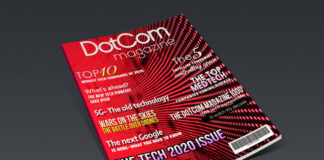Podcast Microphones are essential tools for creating high-quality audio content in the world of podcasting. These specialized microphones are designed to capture clear and professional audio recordings, ensuring that your podcast episodes sound polished and engaging. Whether you are just starting with podcasting or looking to upgrade your equipment, understanding the important features and factors to consider when choosing a podcast microphone is crucial to achieve the best results.
1. Microphone Type: There are various types of podcast microphones available, each with its own advantages and applications. The three main types are:
a. Dynamic Microphones: These are robust and versatile microphones that are well-suited for podcasters who record in less controlled environments, as they can handle ambient noise better than other types. Dynamic microphones are also less sensitive to loud sounds, making them ideal for interview-based podcasts or recordings in noisy settings.
b. Condenser Microphones: These microphones are more sensitive and provide a higher level of audio clarity and detail, making them perfect for recording in quiet, controlled environments. Condenser microphones are often the preferred choice for studio setups and podcasts that prioritize audio quality.
c. USB Microphones: USB microphones are easy to set up and use, as they can be directly connected to your computer without the need for additional audio interfaces. They are a popular choice for beginners and podcasters who prioritize convenience and portability.
2. Polar Pattern: The polar pattern of a podcast microphone determines the direction from which it can pick up sound. The two most common polar patterns for podcasting are:
a. Cardioid: This pattern captures sound from the front while minimizing sounds from the sides and rear. Cardioid microphones are excellent for single-host podcasts or situations where you want to focus on one primary audio source while reducing background noise.
b. Omnidirectional: An omnidirectional microphone picks up sound equally from all directions. This pattern is suitable for podcasts with multiple hosts or round-table discussions where everyone needs to be heard clearly.
3. Connection Type: Podcast microphones can connect to your recording device through various means:
a. XLR: Many professional-grade microphones use XLR connections, which offer better audio quality and versatility. However, XLR microphones require an audio interface or a mixer to connect to your computer, making them more suitable for studio setups.
b. USB: USB microphones, as mentioned earlier, are simple to use and directly connect to your computer. They are plug-and-play devices that eliminate the need for additional equipment, making them a convenient choice for beginners.
4. Frequency Response: The frequency response range of a microphone refers to the range of audio frequencies it can capture. For podcasting purposes, a microphone with a wide frequency response range is generally preferred, as it can accurately reproduce both low and high-frequency sounds, resulting in a well-rounded and natural sound.
5. Budget and Quality: Finding the right balance between your budget and the quality of the microphone is crucial. High-quality podcast microphones can range from affordable to quite expensive. While it’s essential to invest in a decent microphone that suits your needs, you don’t always have to break the bank. There are many mid-range options that offer excellent audio quality without costing a fortune.
Podcast Microphones play a pivotal role in the success of your podcast by ensuring that your audio content is clear, professional, and engaging. Understanding the different types of microphones, their polar patterns, connection types, frequency response, and how they fit into your budget will help you make an informed decision when choosing the right podcast microphone for your specific needs. Whether you opt for a dynamic microphone for versatility, a condenser microphone for superior audio quality, or a USB microphone for ease of use, selecting the perfect microphone will greatly enhance the overall podcasting experience and keep your listeners coming back for more.
Podcast Microphones are essential tools for creating high-quality audio content in the world of podcasting. These specialized microphones are designed to capture clear and professional audio recordings, ensuring that your podcast episodes sound polished and engaging. Whether you are just starting with podcasting or looking to upgrade your equipment, understanding the important features and factors to consider when choosing a podcast microphone is crucial to achieve the best results.
There are various types of podcast microphones available, each with its own advantages and applications. The three main types are dynamic microphones, condenser microphones, and USB microphones. Dynamic microphones are robust and versatile, making them well-suited for podcasters who record in less controlled environments. They can handle ambient noise better than other types, making them ideal for interview-based podcasts or recordings in noisy settings. On the other hand, condenser microphones are more sensitive and provide a higher level of audio clarity and detail. These are perfect for recording in quiet, controlled environments and are often the preferred choice for studio setups and podcasts that prioritize audio quality. USB microphones, on the other hand, are easy to set up and use. They can be directly connected to your computer without the need for additional audio interfaces, making them a popular choice for beginners and podcasters who prioritize convenience and portability.
The polar pattern of a podcast microphone determines the direction from which it can pick up sound. The two most common polar patterns for podcasting are cardioid and omnidirectional. Cardioid microphones capture sound from the front while minimizing sounds from the sides and rear. These microphones are excellent for single-host podcasts or situations where you want to focus on one primary audio source while reducing background noise. Omnidirectional microphones, on the other hand, pick up sound equally from all directions. This pattern is suitable for podcasts with multiple hosts or round-table discussions where everyone needs to be heard clearly.
Podcast microphones can connect to your recording device through various means. XLR connections are commonly found in many professional-grade microphones. They offer better audio quality and versatility, but require an audio interface or a mixer to connect to your computer, making them more suitable for studio setups. On the other hand, USB microphones are simple to use and directly connect to your computer. They are plug-and-play devices that eliminate the need for additional equipment, making them a convenient choice for beginners or podcasters who need a quick and straightforward setup.
The frequency response range of a microphone refers to the range of audio frequencies it can capture. For podcasting purposes, a microphone with a wide frequency response range is generally preferred, as it can accurately reproduce both low and high-frequency sounds. This results in a well-rounded and natural sound that enhances the overall listening experience for your audience.
When choosing a podcast microphone, finding the right balance between your budget and the quality of the microphone is crucial. High-quality podcast microphones can range from affordable to quite expensive. While it’s essential to invest in a decent microphone that suits your needs, you don’t always have to break the bank. There are many mid-range options that offer excellent audio quality without costing a fortune, making them suitable choices for podcasters on a budget.
Podcast microphones play a pivotal role in the success of your podcast by ensuring that your audio content is clear, professional, and engaging. Understanding the different types of microphones, their polar patterns, connection types, frequency response, and how they fit into your budget will help you make an informed decision when choosing the right podcast microphone for your specific needs. Whether you opt for a dynamic microphone for versatility, a condenser microphone for superior audio quality, or a USB microphone for ease of use, selecting the perfect microphone will greatly enhance the overall podcasting experience and keep your listeners coming back for more.
Lastly, keep in mind that the best podcast microphone for you may not necessarily be the most expensive or the one with the most features. It should align with your podcasting goals, budget, and the type of content you create. Investing in a quality microphone that suits your specific needs will significantly enhance the production value of your podcast and contribute to the enjoyment of your listeners.
To conclude, choosing the right podcast microphone involves considering the microphone type, polar pattern, connection type, frequency response, budget, and additional factors like background noise, portability, accessories, reviews, and warranty. A well-chosen podcast microphone will elevate the overall quality of your podcast, making it more enjoyable for your audience and helping you create a lasting impact in the world of podcasting. So, take your time, research thoroughly, and find the perfect podcast microphone that suits your unique voice and content style, allowing you to deliver compelling and engaging episodes with every recording.














